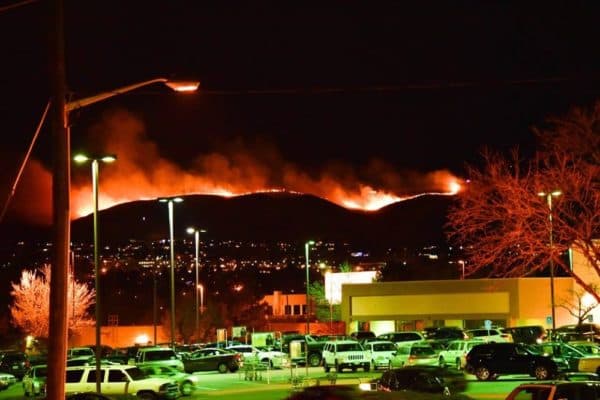Colorado has seen multiple "red flag" days this March, with brush and wildfires breaking out up and down the Interstate 25 corridor.
We're still months ahead of the traditional wildfire "season," and last year's fires burned as late as November, which fits a pattern observed by scientists and firefighters alike: Fire season is practically year-round now.

“From a historical perspective, it would be considered somewhat odd,” said Division Chief Steve Aseltine, a 22-year veteran of West Metro Fire Rescue, referring to a late-season fire that lit up the Denver skyline in November.
“However, what we’ve found over the last five to ten years is that the wildfire season does not really follow any standard, cyclical pattern. We’ve had fairly busy fire activity in the late fall and early spring.”
In the past, Colorado’s wildfire season has been defined as May through September.
This year, fires have encroached into late fall and late winter alongside periods of unusual heat and dryness. Denver's temperatures have beaten records multiple times in recent months.
“There’s always potential for wildfire in lower elevations, and especially grass areas where the fuels are dormant and there’s a lack of snow cover,” said Caley Fisher, spokeswoman for the Colorado Division of Fire Prevention and Control.
This fits into a larger pattern of lengthening fire seasons. The “length of the season in the West has increased by 78 days since the 1970s,” the New York Times reported. A record 10.1 million acres burned in the U.S. last year, and five of the largest burn years have happened in the last decade, according to federal records that go back to 1960.
(It’s worth noting, though, that wildfires burned many times more acres in the 1930s, before modern fire control and infrastructure was available.)
Regardless, the fire season for the Southern Rockies “has consistently increased from the 1970s from 31 days (1 month) to 117 days (4 months) due to warming over this period,” Tania Schoennagel, a research scientist at CU Boulder, wrote in an email to me.
And researchers at Harvard have calculated that the amount of acreage burned along the Front Range could double by 2050 while the "season" grows another three weeks longer.
What you can do:
Here are some more tips from the Colorado State Forest Service, which are especially relevant for people living near the border between the urban and the wild:
- Clean pine needles, leaves and other debris from roofs and gutter at least twice a year. This eliminates an ignition source for firebrands, especially during hot, dry weather.
- Stack firewood away from your house. Locate firewood at least 30 feet uphill from your home. Do not stack firewood under the deck.
- Remove unhealthy vegetation. Trees and shrubs that are stressed, diseased, dead or dying should be removed so that they do not become a fuel source for potential fires.
- Create defensible space at a minimum of 100 feet around a home. Increase this distance if the structure is located on a slope.
- Thin out continuous tree and brush (shrub) cover around structures. Remove flammable vegetation from within the initial 15 feet around structures.
- Beyond the initial 15-30 feet, thin trees to achieve a 10-foot crown spacing. Occasionally, clumps of two or three trees are acceptable for a more natural appearance, if additional space surrounds them.
- Mow grasses and weeds to a height of six inches or less for a distance of 30 feet from all structures.
- Prune tree branches within the defensible space up to a height of 10 feet above ground.
- Dispose of all slash and debris left from thinning by chipping, hauling away or piling for burning later. Always contact your county sheriff’s office or local fire department first for information about burning slash piles. Contact your local CSFS District or Field Office for information regarding chipping and other removal options.
- Remove shrubs and small trees or other potential ladder fuels from beneath large trees. Left in place, these fuels can carry a ground fire into tree crowns.
- Trim any branches extending over roofs, and remove branches within 10 feet of chimneys.
- Place liquefied petroleum gas (LPG) containers at least 30 feet from structures. Clear anything flammable, including vegetation from within 10 feet of all tanks.













